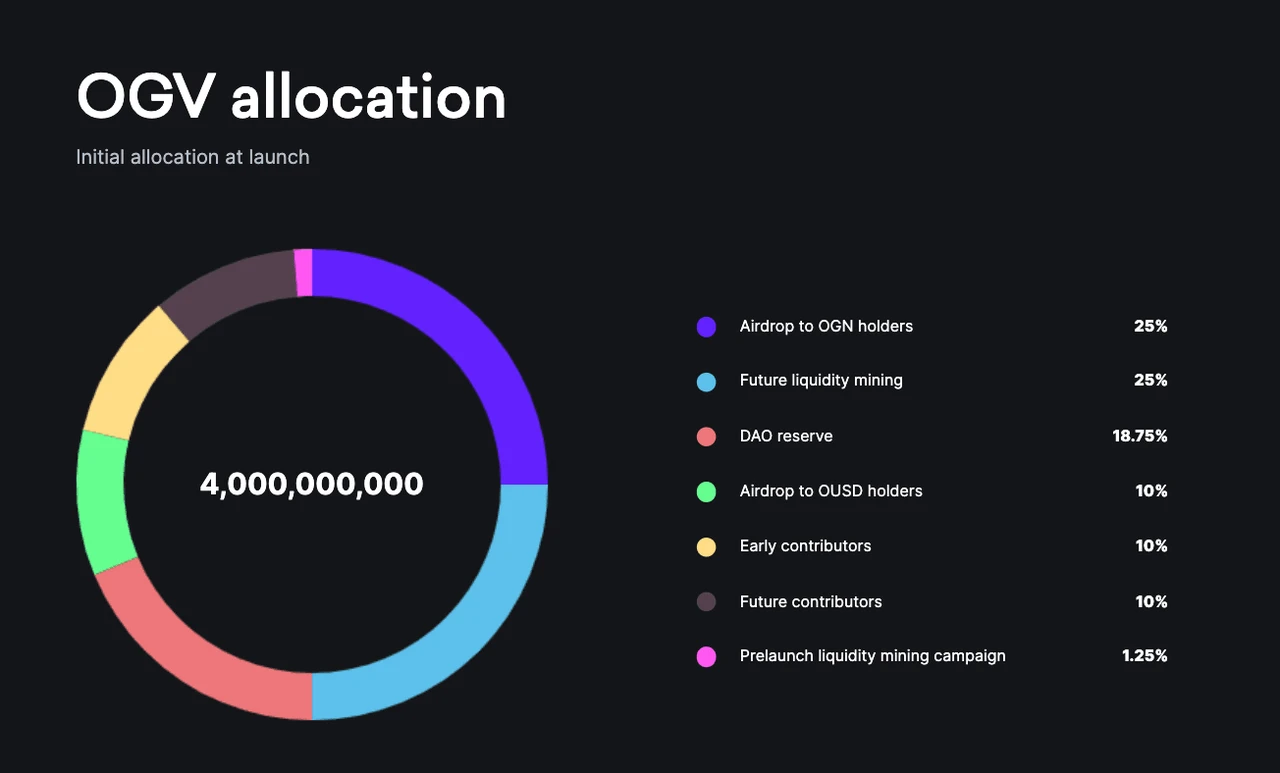first level title
Attributes
Attributes
OUSD:
secondary title
1 OUSD= 1 USD
Backed 1:1 by other stablecoins (USDT, USDC, and DAI)
Generate income by deploying underlying assets on diverse DeFi protocols
100% open source on-chain, no license required
OETH:
1 OETH= 1 ETH
secondary title
Backed 1:1 by Ether and Liquidity Collateralized Derivatives
OETH earns higher yield than rETH, stETH or sfrxETH
No need to stake or claim rewards
OETH earns income by providing DeFi liquidity and holding blue-chip liquidity mortgage derivatives
buy and sell
Origin Protocol users can upgrade their existing stablecoins to OUSD via app.ousd.com, and convert ETH or LSD to OETH via app.oeth.com. After the upgrade, the users OUSD and OETH will automatically accumulate production immediately. When users make transactions, Origin DApps will consider slippage and gas fees, and intelligently provide users with the most suitable price. This means that DApps will encourage users to buy OUSD or OETH already in circulation, rather than minting new tokens from the vault. DApps will deploy holders capital to a diverse set of income strategies that can spread risk and rebalance over time to achieve strong returns.
Users can exchange their OUSD or OETH holdings for underlying collateral at any time. As with purchases, the Origin DApp takes into account slippage, gas fees, and vault exit fees, and intelligently offers users the most appropriate price. This means that DApps will often help users sell their OUSD or OETH on an AMM, rather than redeeming it with a vault and incurring the protocol’s exit fee.
When a user redeems OUSD through the vault, the vault will charge the user an exit fee of 0.25%. This fee will be distributed as an additional benefit to the remaining participants in the vault (i.e. other OUSD or OETH holders). The fee acts as a security feature to make it difficult for attackers to exploit lagging oracles, preventing them from stealing stablecoins from vaults if the underlying asset is mispriced. In addition, exit fees exist to incentivize long-term holders rather than short-term speculators. After the redemption, the treasury will return the tokens in the same proportion as the users current holdings. This lack of user-optional design protects vaults in the event that a supported stablecoin loses its peg.
The agreement guarantees a 1:1 anchor between OUSD and USD by using Chainlinks oracle service to monitor the exchange rate of stablecoins and adjust the minting and redemption rates accordingly.
secondary title
OUSD generates income through stablecoin lending and liquidity provision, and OUSD earns income through stablecoin loans of Compound, Morpho and AAVE and by providing liquidity on Curve and Convex. The 30-day and 365-day trailing returns for OUSD remain around 4% to 7%. Notably, OUSD has a higher yield than any single protocol used by Origin Dollar.
secondary title
Borrowers on AAVE and Compound provide different types of collateral such as ETH, BTC, and other tokens to borrow assets. AAVE and Compound require borrowers to be overcollateralized, and if a borrowers leverage exceeds a certain threshold, the protocol will sell their collateral. For example, users posting ETH as collateral on AAVE can only borrow up to 82.5% of their position. If they lend USDC to 85% of their original value in ETH, their collateral will be sold. Using this mechanism, OUSD lends stablecoins on the platform to earn yield and distribute it to OUSD holders. These earnings come from interest and fees generated by stablecoin pools on Aave and Compound.
secondary title
Liquidity providers on Curve allow traders to exchange assets, such as DAI, USDC or USDT, for a fee. Curve also rewards liquidity providers with CRV tokens. Convex is Curves revenue optimizer, which gives priority to obtaining CRV tokens. Liquidity providers can stake their Curve positions on Convex for enhanced rewards and CVX tokens. In return, Convex is rewarded with a percentage of CRV tokens. OUSD acts as a liquidity provider for DAI, USDC, USDT, and OUSD, collecting transaction fees and selling CRV token rewards for more stablecoins. Through the above agreement, users receive token rewards and fees.
OETH
secondary title
income strategy
Validator Rewards
transaction fee
transaction fee
reward tokens
Origin Ether earns additional benefits from its Convex AMO strategy. OETH collateral is used to provide liquidity to OETH-ETH pools on both curve and convexity, allowing holders to earn higher yields from transaction fees on these liquidity pools. Finally, OETH earns from progressive reward tokens, starting with CRV and CVX.
Tokenomics
first level title
The initial circulating supply of OGV tokens is 1 billion OGV, and the initial total supply is 4 billion OGV, which will be fully distributed after four years.
OGV tokens are divided into initial distribution:
25% airdrop to OGN holders
1.25% Liquidity mining activity before launch
25% future liquidity mining incentives
10% USD holders
10% current open source contributors
10% future open source contributors

18.75% DAO Reserve
The vast majority of tokens are distributed to parties not controlled by Origin, thus effectively preventing Origin or its entities from controlling voting rights.
Vote-Escrow OGV (veOGV)
Origin Protocol is not involved in OGVs private or public fundraising efforts. The token was launched to the community in July 2022, and over the next few years, most tokens will be distributed to OUSD holders, OETH holders, and liquidity providers.
OGV holders can receive veOGV through the OETH staking protocol, while veOGV holders earn protocol income and control token rewards from the Origin Ether protocol. The OETH protocol will draw a 20% performance fee from the income obtained by OETH. This fee will be used to acquire CVX tokens, effectively reinvesting the protocol through the ever-increasing amount of CVX and CRV rewards passed on to the OETH-ETH curve pool. This greatly increases the yield of the origin Ether AMO strategy and the pool of OETH deployment funds.
first level title
team information
team information
Origins main investor is Pantera Capital, the worlds oldest cryptocurrency fund. Other notable investors include Foundation Capital, Blocktower, Blockchain.com, KBW Ventures, Spartan Capital, PreAngel Fund, Hashed, Kenetic Capital, FBG, QCP Capital, and Smart Contract Japan. Notable angel investors include YouTube founder Steve Chen, Reddit founder Alexis Ohanian, Y Combinator partner Garry Tan and Akamai founder Randall Kaplan.
Summary
As a new member of the LSDFi track, the Origin Protocol protocol is using a variety of income strategies to enhance income. The original volume LSDFI track has added another member, and the liquidity competition among xETH has become increasingly fierce. But if we think carefully, in LSD War, the real winner may never be on the battlefield.
Disclaimer: This article is for research information only and does not constitute any investment advice or recommendation. The project mechanism introduced in this article only represents the authors personal opinion, and has no interest in the author of this article or this platform. Blockchain and digital currency investments are subject to various uncertainties such as extremely high market risk, policy risk, and technical risk. The price of tokens in the secondary market fluctuates violently. Investors should make cautious decisions and independently bear investment risks. The author of this article or this platform is not responsible for any losses caused by investors using the information provided in this article.










